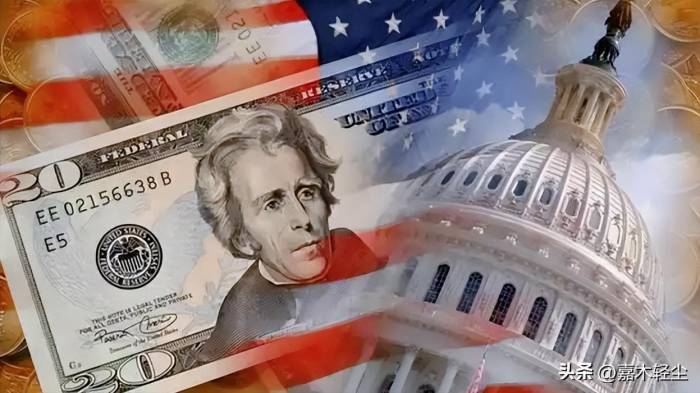Global Currency Upheaval: RMB, Ruble, Peso Tumble
The global currency market has recently experienced an unprecedented upheaval. The Chinese yuan fell past the critical 7.27 threshold, while other currencies such as the Mexican peso and Russian ruble also faced significant depreciation. At the heart of this turmoil lies a seemingly casual statement made on social media. A proposed tariff policy acted as a catalyst, triggering a complex tug-of-war involving the U.S. dollar, global trade, and mounting debt. But is this merely a short-term market fluctuation, or could it be the prelude to a new global economic crisis?
The U.S. dollar plays a pivotal role in the international financial system, functioning as both a stabilizer and a disruptor. On one hand, its dominance ensures global liquidity. On the other, it forces other countries to endure the consequences of its volatility. Over the past few years, the Federal Reserve’s aggressive interest rate hikes have placed immense pressure on emerging markets. Now, with the U.S. dollar index approaching a high of 106.7, heavily indebted nations are finding themselves in an increasingly precarious position.
Advertisement
For figures like Donald Trump, tariff policies have long been viewed as a panacea for economic revival. By imposing trade barriers, he seeks to reroute global supply chains back to the U.S. and revitalize domestic manufacturing. However, this strategy exerts significant export pressure on countries like China and Mexico while also forcing American consumers to absorb higher costs. The result is a vicious cycle of rising inflation and dampened economic growth, a tug-of-war where every participant seems destined to lose.
The logic behind tariff policies is clear: they are often wielded as a political lever to boost electoral prospects and secure funding for ballooning national debt. Yet, this shortsighted economic strategy disregards the interconnectedness of the global economy in the modern era.
Take Mexico as an example. In recent years, through favorable trade agreements, Mexico has managed to become the top exporter to the U.S. However, the sustainability of this position is now under threat. Trump’s proposal to impose tariffs on a broader range of goods will undoubtedly create a ripple effect. Higher tariffs mean increased prices for imported goods, which will elevate the cost of living for American consumers. As domestic demand falters, the impact will circle back to weaken U.S. businesses.
More importantly, the long-term fallout of tariff policies extends beyond economics to diplomatic relationships. Other countries may respond to protectionist U.S. policies by forming alliances to safeguard their interests. Such a shift could marginalize the U.S. on the global stage, eroding the dollar’s dominance in international trade.
U.S. national debt, now exceeding $36 trillion, represents another looming threat. For an economy deeply reliant on borrowing, this is not just a fiscal issue but also a question of global confidence. Should the debt spiral beyond acceptable limits, a collapse in the U.S. Treasury market could trigger a worldwide economic catastrophe.
What’s perplexing is the contradiction in U.S. policies: on one hand, pursuing aggressive tariffs; on the other, relying on international investors to finance its debt. Such conflicting strategies beg the question: is the goal to bolster the dollar’s supremacy or to drain its reserves in a race against time?
The Federal Reserve finds itself trapped in a policy conundrum. Interest rate hikes suppress demand but also strain the global financial system, while rate cuts risk reigniting inflationary pressures. With diminishing returns on U.S. Treasuries, the administration’s economic plans face significant hurdles.

History suggests that crises in the U.S. often serve as inflection points for global economic transformation. For instance, the financial meltdown during the 2008 subprime crisis was followed by quantitative easing policies that not only rescued the U.S. economy but also stimulated a global market rebound. However, today’s leadership appears less focused on long-term solutions and more inclined toward confrontation and brinkmanship.
To address the challenges at hand, the U.S. must reassess its role in the global economic ecosystem. Strengthening cooperation with nations like China and Mexico is essential. By fostering multilateral trade and investment relationships, the U.S. can create deeper economic interdependence, aligning the interests of dollar-holding nations with its economic stability.
If the U.S. succeeds in stabilizing global trade networks through collaborative efforts, countries with substantial dollar reserves would likely remain confident in supporting U.S. debt. This, in turn, could catalyze not only an economic recovery at home but also renewed growth and stability in the global market.
The current turbulence in the global currency market serves as a stark reminder of the intricate connections between trade, debt, and monetary policy. Whether this moment becomes a precursor to crisis or an opportunity for reform will depend on the ability of global leaders to prioritize cooperation over confrontation. In an era where economic challenges know no borders, collaboration remains the only viable path forward.
Post Comment